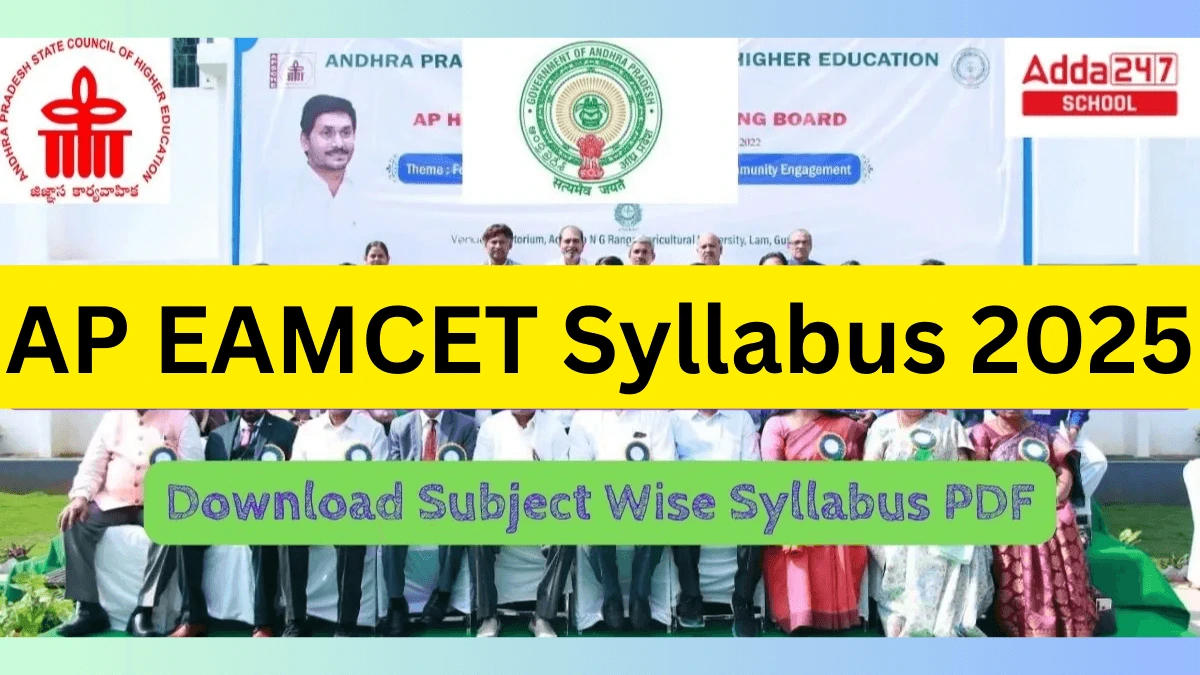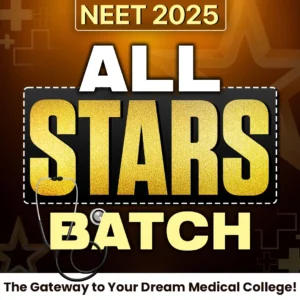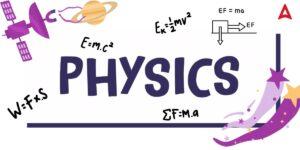Table of Contents
The Andhra Pradesh State Council of Higher Education (APSCHE) will soon the AP EAMCET Syllabus 2025. The AP EAPCET 2025 is expected to be made public in March 2025 on the official website at cets.apsche.ap.gov.in. Students can also download the updated AP EAPCET 2025 syllabus PDF here. Until the, candidates can check the syllabus from the previous year to carry on with their preparation. The AP EAMCET syllabus 2025 will likely remain the same as the previous year’s syllabus.
AP EAMCET Syllabus 2025
The Andhra Pradesh State Council of Higher Education (APSCHE) releases the syllabus for the AP EAMCET exam every year. The AP EAMCET 2025 syllabus is released for both BiPC (Agriculture and Medical) and MPC (Engineering) streams. Candidates can use the AP EAMCET syllabus 2025 as a reference while preparing for the AP EAMCET 2025 exam. Important topics and chapters that will be tested are included in the AP EAMCET 2025 syllabus. The AP EAMCET 2025 exam will be administered online using a computer by the authorities.
The Syllabus of AP EAMCET 2025 exam consists of various subjects like Physics, Chemistry, Biology (Botany and Zoology), and Mathematics. The MPC stream of the syllabus consist of Mathematics, Physics, and Chemistry while the AP EMACET 2025 syllabus for the BiPC stream consists of Biology, Physics, and Chemistry.
EAMCET Syllabus 2025: Highlights
The AP EAMCET 2025 exam, now AP EAPCET 2025 exam, is anticipated to be held in May 2025. The exam administering authority has published the official AP EAMCET 2025 syllabus PDF that includes detailed information on all of the major topics and subtopics covered in these areas. Candidates who want to grasp the EAMCET weightage chapter-by-chapter for the 2025 AP must study the EAMCET syllabus.
| Particulars | Details |
| Exam Name | AP EAMCET 2025 |
| Full Name | Andhra Pradesh Engineering, Agriculture, and Medical Common Entrance Test |
| Organization | Andhra Pradesh State Council of Higher Education (APSCHE) |
| Conducting Body | Jawaharlal Nehru Technological University (JNTUK), Kakinada |
| Syllabus Status | Not Released |
| Syllabus Release Date | March 2025 (Expected) |
| Category | State-level Entrance Exam |
| Exam Frequency | Once a year |
| Mode of Exam | Online |
| Mode of Application | Online |
| Courses offered | Engineering, Agriculture, and Pharmacy |
| Exam Duration | 3 hours |
| Language | English & Telugu |
| Syllabus | Physics, Chemistry, Botany, Zoology, Mathematics |
| Engineering syllabus | Physics, Chemistry, and Mathematics |
| Agriculture/Pharmacy syllabus | Physics, Chemistry, and Biology (Botany & Zoology) |
| Official Website | cets.apsche.ap.gov.in |
EAMCET 2025 Syllabus
The MPC stream syllabus of AP EAMCET 2025 is useful for students who want to take admission into the Engineering courses. By taking the MPC stream exam of the AP EAMCET, students get admission into various Engineering branches in different engineering colleges of the Andhra Pradesh state. The AP EAMCET syllabus for MPC consists of PCM subjects. The detailed syllabus for the AP EAMCET 2025 is given subject-wise in the following sections.
AP EAMCET Syllabus 2025 For Physics
The Physics syllabus for the AP EAMCET 2025 exam is given below. The detailed syllabus has been given below which includes the sub-topics present in every topic/chapter of the Physics subject for the AP EAMCET exam.
PHYSICAL WORLD
What is physics? Scope and excitement of physics. Physics, technology and society, Fundamental forces in nature, Nature of physical laws
UNITS AND MEASUREMENTS
The international system of units, Measurement of Length, Measurement of Large Distances, Estimation of Very Small Distances, Size of a Molecule, Range of Lengths, Measurement of Mass, Range of Masses, Measurement of time, Accuracy, precision of instruments and errors in measurement, Systematic errors, random errors, least count error, Absolute Error, Relative Error and Percentage Error, Combination of Errors, Significant figures, Rules for Arithmetic Operations with Significant Figures, Rounding off the Uncertain Digits, Rules for Determining the Uncertainty in the Results of Arithmetic Calculations, Dimensions of Physical Quantities, Dimensional Formulae and dimensional equations, Dimensional Analysis and its Applications, Checking the Dimensional Consistency of Equations, Deducing Relation among the Physical Quantities
MOTION IN A STRAIGHT LINE
Position, path length and displacement, average velocity and average speed, instantaneous velocity and speed, acceleration, kinematic equations for uniformly accelerated motion, relative velocity
MOTION IN A PLANE
Scalars and vectors, position and displacement vectors, equality of vectors, multiplication of vectors by real numbers, addition and subtraction of vectors – graphical method, resolution of vectors, vector addition – analytical method, motion in a plane, position vector and displacement, velocity, acceleration, motion in a plane with constant acceleration, relative velocity in two dimensions, projectile motion, equation of path of a projectile, time of maximum height, maximum height of a projectile, horizontal range of projectile, uniform circular motion
LAWS OF MOTION
Aristotle’s fallacy, Equilibrium of a particle, Common forces in mechanics, friction, types of friction, static, kinetic and rolling frictions, Circular motion, Motion of a car on a level road, Motion of a car on a banked road, solving problems in mechanics
WORK, ENERGY AND POWER
The Scalar Product, Notions of work and kinetic energy, The work-energy theorem, Work, Kinetic energy, Work done by a variable force, The work-energy theorem for a variable force, The concept of Potential Energy, The conservation of Mechanical Energy, The Potential Energy of a spring, Various forms of energy, Heat, Chemical Energy, Electrical Energy, The Equivalence of Mass and Energy, Nuclear Energy, The Principle of Conservation of Energy, Power, Collisions, Elastic and Inelastic Collisions, Collisions in one dimension, Coefficient of Restitution and its determination, Collisions in Two Dimensions
SYSTEMS OF PARTICLES AND ROTATIONAL MOTION
Rigid body motion, Centre of mass, Centre of Gravity, Motion of centre of mass, Linear momentum of a system of particles, Vector product of two vectors, Angular velocity and its relation with linear velocity, Angular acceleration, Kinematics of rotational motion about a fixed axis, Moment of force (Torque), Angular momentum of particle, Torque and angular momentum for a system of a particle, conservation of angular momentum, Equilibrium of a rigid body, Principle of moments, Moment of inertia, Theorems of perpendicular and parallel axes, Dynamics of rotational motion about a fixed axis, Angular momentum in case of rotation about a fixed axis, Rolling motion, Kinetic Energy of Rolling Motion
OSCILLATIONS
Periodic and oscillatory motions, Period and frequency, Displacement, Simple harmonic motion (S.H.M.), Simple harmonic motion and uniform circular motion, Velocity and acceleration in simple harmonic motion, Force law for Simple harmonic Motion, Energy in simple harmonic motion, Some systems executing Simple Harmonic Motion, Oscillations due to a spring, The Simple Pendulum, Damped simple harmonic motion, Forced oscillations and resonance
GRAVITATION
Universal law of gravitation, central forces, the gravitational constant, Acceleration due to gravity of the earth, Acceleration due to gravity below and above the surface of earth, Gravitational potential energy, Escape speed, Orbital Speed, Earth satellites, Energy of an orbiting satellite, Geostationary and polar satellites, Weightlessness
MECHANICAL PROPERTIES OF SOLIDS
Elastic behavior of solids, Stress and strain, Hooke’s law, Stress-strain curve, Elastic moduli, Young’s Modulus, Determination of Young’s Modulus of the Material of a Wire, Shear Modulus, Bulk Modulus, Applications of elastic behavior of materials
MECHANICAL PROPERTIES OF FLUIDS
Pressure, Pascal’s Law, Variation of Pressure with Depth, Atmospheric Pressure and Gauge Pressure, Hydraulic Machines, Archimedes’ Principle, Streamline flow, Bernoulli’s principle, Speed of Efflux, Torricelli’s Law, Venturimeter, Blood Flow and Heart Attack, Dynamic Lift, Viscosity, Variation of Viscosity of fluids with temperature, Stokes’ Law, Reynolds number, Critical Velocity, Surface tension and Surface Energy, Angle of Contact, Drops and Bubbles, Capillary Rise, Detergents and Surface Tension
THERMAL PROPERTIES OF MATTER
Temperature and heat, Measurement of temperature, Ideal-gas equation and absolute temperature, Thermal expansion, Specific heat capacity, Calorimetry, Change of state, Triple Point, Regelation, Latent Heat, Heat transfer, Conduction, Convection, Radiation, Black body Radiation, Greenhouse Effect, Newton’s law of cooling and its experimental verification
THERMODYNAMICS
Thermal equilibrium, Zeroth law of thermodynamics, Heat, Internal Energy and work, First law of thermodynamics, Specific heat capacity, Specific heat capacity of water, Thermodynamic state variables and equation of State, Thermodynamic processes, Quasi-static process, Isothermal Process, Adiabatic Process, Isochoric Process, Isobaric process, Cyclic process, Heat engines, Refrigerators, and heat pumps, Second law of thermodynamics, Reversible and irreversible processes, Carnot engine, Carnot’s theorem
KINETIC THEORY
Molecular nature of matter, Behaviour of gases, Boyle’s Law, Charles’ Law, Kinetic theory of an ideal gas, Pressure of an Ideal Gas, Kinetic interpretation of temperature, Law of equipartition of energy, Specific heat capacity, Monatomic Gases, Diatomic Gases, Polyatomic Gases, Specific Heat Capacity of Solids, Specific Heat Capacity of Water, Mean free path
WAVES
Transverse and longitudinal waves, displacement relation in a progressive wave, amplitude and phase, wavelength and angular wave number, period, angular frequency and frequency, the speed of a traveling wave, speed of a transverse wave on a stretched string, speed of a longitudinal wave (speed of sound), the principle of superposition of waves, reflection of waves, standing waves and normal modes, beats, Doppler effect and its two situations
RAY OPTICS AND OPTICAL INSTRUMENTS
Reflection of light by spherical mirrors, sign convention, Reflection of Light by Spherical Mirrors, the mirror equation, refraction, total internal reflection, total internal reflection in nature and its technological applications, refraction at spherical surfaces and by lenses, power of a lens, combination of thin lenses in contact, refraction through a prism, dispersion by a prism, some natural phenomena due to sunlight, the rainbow, scattering of light, optical instruments, the eye, the simple and compound microscopes, refracting telescope and Cassegrain reflecting telescope
WAVE OPTICS
Huygens principle, refraction and reflection of plane waves using Huygens principle, refraction in a rarer medium (at the denser medium boundary), reflection of a plane wave by a plane surface, the Doppler effect, coherent and incoherent addition of waves, interference of light waves and Young‘s experiment, diffraction, the single slit, resolving power of optical instruments, the validity of ray optics, polarisation by refraction, plane polarized light, polaroids, polarisation by scattering, polarisation by reflection
ELECTRIC CHARGES AND FIELDS
Electric charge, conductors and insulators, charging by induction, basic properties of electric charges, additivity of charges, conservation of charge, quantization of charge, Coulomb’s law, forces between multiple charges, electric field, electric field due to a system of charges, physical significance of electric field, electric field lines, electric flux, electric dipole, the field of an electric dipole for points on the axial line and on the equatorial plane, physical significance of dipoles, dipole in a uniform external field, continuous charge distribution, Gauss’s law, applications of Gauss’s law, field due to uniformly charged thin spherical shell, infinitely long straight uniformly charged wire, infinite plane sheet
ELECTROSTATIC POTENTIAL AND CAPACITANCE
Electrostatic potential, potential due to a point charge, potential due to an electric dipole, potential due to a system of charges, equipotential surfaces, relation between field and potential, potential energy of a system of charges, electrostatic shielding, dielectrics and polarisation, electric displacement, capacitors and capacitance, the parallel plate capacitor, effect of dielectric on capacitance, combination of capacitors, capacitors in series, potential energy in an external field, potential energy of a single charge, potential energy of a system of two charges in an external field, potential energy of a dipole in an external field, electrostatics of conductors, capacitors in parallel, energy stored in a capacitor, Van de Graaff generator
CURRENT ELECTRICITY
Electric current, electric current in conductors, Ohm’s law, drift of electrons and the origin of resistivity, mobility, limitations of Ohm’s law, resistivity of various materials, colour code of resistors, Colour Code for carbon resisters, Temperature dependence of resistivity, electrical energy, power, combination of resistors – series and parallel. Cells, EMF, internal resistance, cells in series and in parallel, Kirchhoff’s rules, Wheatstone Bridge, Meter Bridge, Potentiometer
MOVING CHARGES AND MAGNETISM
Magnetic force, sources and fields, magnetic field, Lorentz force, magnetic force on a current carrying conductor, motion in a magnetic field, helical motion of charged particles, motion in combined electric and magnetic fields, velocity selector, Cyclotron, magnetic field due to a current element, Biot – Savart’s law, Magnetic field on the axis of a circular current loop, Ampere’s circuital law, the solenoid and the toroid, force between two parallel current carrying conductors, the ampere (UNIT), torque on current loop, magnetic dipole, torque on a rectangular current loop in a uniform magnetic field, circular current loop as a magnetic dipole, the magnetic dipole moment of a revolving electron, the Moving Coil Galvanometer; conversion into ammeter and voltmeter
MAGNETISM AND MATTER
The bar magnet, the magnetic field lines, bar magnet as an equivalent solenoid, The dipole in a uniform magnetic field, the electrostatic analog, Magnetism and Gauss’s Law, The Earth’s magnetism, magnetic declination and dip, magnetisation and magnetic intensity, magnetic properties of materials, permanent magnets and electromagnets
ELECTROMAGNETIC INDUCTION
The experiments of Faraday and Henry, magnetic flux, Faraday’s Law of Induction, Lenz’s law and conservation of energy, motional electromotive force, energy consideration – a quantitative study, Eddy currents, inductance, mutual inductance, self-inductance, AC generator
ALTERNATING CURRENT
AC voltage applied to a resistor, representation of AC current and voltage by rotating vectors – Phasors, AC voltage applied to an inductor, AC voltage applied to a capacitor, AC voltage applied to a series LCR circuit, Phasor – diagram solution, analytical solution, resonance, sharpness of resonance, power in AC circuit, the power factor, LC oscillations, transformers
ELECTROMAGNETIC WAVES
Displacement current, Maxwell’s equations, electromagnetic waves, sources of electromagnetic waves, nature of electromagnetic waves, electromagnetic spectrum: radio waves, microwaves, infrared waves, visible rays, ultraviolet rays, X-rays, gamma rays
DUAL NATURE OF RADIATION AND MATTER
Electron emission, Photoelectric Effect, Hertz’s observations, Hallwachs and Lenard’s observations, effect of frequency of incident radiation on stopping potential, Photoelectric effect and Wave theory of Light, experimental study of photoelectric effect, effect of intensity of light on photocurrent, effect of potential on photoelectric current, Einstein’s Photoelectric equation, Energy Quantum of Radiation, particle nature of light, the photon, wave nature of matter, photocell, Davisson and Germer experiment
ATOMS
Alpha particle scattering and Rutherford’s nuclear model of an atom, alpha particle trajectory, electron orbits, atomic spectra, spectral series, Bohr model of the hydrogen atom, energy levels, Franck – Hertz experiment, the line spectra of the hydrogen atom, de Broglie’s explanation of Bohr’s second postulate of quantization, LASER light
NUCLEI
Atomic masses and composition of nucleus, discovery of neutron, size of the nucleus, Mass – Energy and Nuclear Binding Energy, Binding energy of Nuecleon and its variation with Mass Number, Nuclear Force, Radioactivity (alpha, beta and gamma particles and their properties), Law of radioactive decay, half life and mean life of a Radioactive material, Nuclear Energy, Fission, Nuclear reactor, nuclear fusion, energy generation in stars, controlled thermonuclear fusion
SEMICONDUCTOR ELECTRONICS: MATERIALS, DEVICES AND SIMPLE CIRCUITS
Classification of metals, conductors, and semiconductors on the basis of conductivity and energy bands, Band theory of solids, Intrinsic semiconductor, Extrinsic semiconductor, p-type semiconductor, Optoelectronic junction devices, Photodiode, light emitting diode, solar cell. Junction transistor, structure and action, Basic transistor circuit configurations and transistor characteristics, n-type semiconductor, p-n junction formation, semiconductor diode, p-n junction diode under forward bias, p-n junction diode under reverse bias, Application of junction diode as a rectifier, special purpose p-n junction diodes, Zener diode, Zener diode as voltage regulator, transistor as a switch and as an amplifier (CE – Configuration), Feedback amplifier and transistor oscillator, Digital Electronics and Logic gates, NOT, OR, AND, NAND and NOR Gates, Integrated circuits
COMMUNICATION SYSTEMS
Elements of a Communication system, basic terminology used in electronic communication systems, bandwidth of signals, bandwidth of transmission medium, propagation of electromagnetic waves, ground waves, sky waves, space wave, modulation and its necessity, size of the antenna or aerial, effective power radiated by an antenna, mixing up of signals from different transmitters, amplitude modulation, production of amplitude modulated wave, detection of amplitude modulated wave
AP EAMCET Syllabus 2025 for Chemistry
The detailed AP EAMCET 2025 syllabus for the chemistry subject includes physical, organic and inorganic components. The syllabus for the Chemistry subject is given below for the AP EAMCET exam.
-
Atomic Structure
-
Classification of Elements and Periodicity In Properties
-
Chemical Bonding and Molecular Structure
-
States of Matter: Gases and Liquids
-
Stoichiometry
-
Thermodynamics
-
Chemical Equilibrium and Acids-Bases
-
Hydrogen and Its Compounds
-
The s – Block Elements (Alkali And Alkaline Earth Metals)
-
p- Block Elements Group 13 (Boron Family)
-
p-Block Elements – Group 14 (Carbon Family)
-
Organic Chemistry-Some Basic Principles, Techniques and Hydrocarbons
-
Solid State
-
Solutions
-
Electrochemistry and Chemical Kinetics:
-
Surface Chemistry
-
p-Block Elements
-
d And f Block Elements & Coordination Compounds
-
Biomolecules
-
Haloalkanes and Haloarenes
-
Organic Compounds Containing C, H and O (Alcohols, Phenols, Ethers, Aldehydes, Ketones and Carboxylic Acids)
-
Organic Compounds Containing Nitrogen
Check: NEET Updated Syllabus 2025
AP EAMCET Syllabus 2025 For Mathematics
Mathematics subject is included in the MPC category only, i.e., the Mathematics subject is only included in the Engineering exam syllabus, i.e., in the MPC stream. The syllabus for the Mathematics subject is given below with topics and sub-topics.
Algebra
Functions, Matrices, Complex Numbers, De Moivre’s Theorem, Quadratic Expressions, Theory Of Equations, Permutations And Combinations, Binomial Theorem, Partial Fractions
Trigonometry
Trigonometric Ratios Up to Transformation, Hyperbolic Function, Properties Of Triangles
Vector Algebra
Addition Of Vectors, Product Of Vectors
Probability
Measures Of Dispersion, Probability, Random Variables And Probability, Distributions
Calculus
Limits And Continuity, Differentiation, Applications Of Derivatives, Integration, Definite Integrals, Differential Equations
Coordinate Geometry
Locus, The Straight Line, Pair Of Straight Lines, Circle, System Of Circles, Parabola, Ellipse, Hyperbola, Three Dimensional Coordinate, Plane
EAMCET Syllabus 2025 for BiPC
The AP EAMCET BiPC category exam is conducted for the agriculture and pharmacy courses. The BiPC syllabus is common with the MPC syllabus for the Physics and Chemistry subjects. Except for the Mathematics subject, the AP EAMCET BiPC syllabus consists of the Biology subject. The Biology syllabus is further divided into two sub-domains: Botany and Zoology. The detailed syllabus for the Biology subject is given below.
Botany
- Diversity in the Living World
- Plants, Microbes and Human Welfare
- Genetics: Principles of Inheritance and Variation
- Plant Systematic
- Biotechnology and its Application
- Plant Physiology
- Plant Ecology
- Reproduction in Plants
- Morphology of Flowering Plants
- Internal Organisation of Plants
- Microbiology
- Cell- The Unit of Life
- Molecular Biology: Molecular Basis of Inheritance
Zoology
- Human Anatomy and Physiology-3
- Locomotion & Reproduction In Protozoa
- Human Anatomy and Physiology-2
- Ecology & Environment
- Invertebrate Phyla
- Biology & Human Welfare
- Zoology – Diversity of Living World
- Organic Evolution
- Applied Biology
- Type Study of Periplaneta Americana
- Structural Organisation in Animals
- Phylum: Chordata
- Human Anatomy and Physiology-1
- Human Reproduction
- Human Anatomy and Physiology-4
- Genetics
AP EAMCET 2025 Syllabus PDF Free Download
The detailed AP EAMCET 2024 syllabus pdf is given below for both the Engineering and Agriculture & Pharmacy Stream. Students must go through this syllabus PDF for their EAPCET exam preparation. The latest syllabus will be updated soon
AP EAPCET Syllabus 2024 – Agriculture and Pharmacy
AP EAPCET 2024 Syllabus Engineering
AP EAMCET 2025 Syllabus MPC Weightage for Physics
It is crucial for students to know about the important chapters for the exam by having a proper knowledge of the chapter wise weightage of the AP EAMCET exam. The chapter wise weightage of the AP EAMCET 2025 Physics subject is given below.
| Chapter Name | Weightage |
| PHYSICAL WORLD | 2% |
| UNITS AND MEASUREMENTS | 3% |
| MOTION IN A STRAIGHT LINE | 2% |
| MOTION IN A PLANE | 6% |
| LAWS OF MOTION | 8% |
| WORK, ENERGY, AND POWER | 7% |
| SYSTEM OF PARTICLES AND ROTATIONAL MOTION | 6% |
| OSCILLATIONS | 4% |
| MECHANICAL PROPERTIES OF SOLIDS & FLUDIS | 5% |
| THERMAL PROPERTIES OF MATTER | 3% |
| THERMODYNAMICS | 9% |
| KINETIC THEORY | 2% |
| WAVES | 4% |
| RAY OPTICS AND OPTICAL INSTRUMENTS | 3% |
| WAVE OPTICS | 2% |
| ELECTRIC CHARGES AND FIELDS | 5% |
| ELECTROSTATIC POTENTIAL AND CAPACITANCE | 1% |
| CURRENT ELECTRICITY | 4% |
| MOVING CHARGES AND MAGNETISM | 6% |
| MAGNETISM AND MATTER | 2% |
| ELECTROMAGNETIC INDUCTION | 1% |
| ELECTROMAGNETIC WAVES | 3% |
| ALTERNATING CURRENT | 3% |
| DUAL NATURE OF RADIATION AND MATTER | 4% |
| ATOMS, NUCLEI | 5% |
| SEMICONDUCTOR ELECTRONICS | 2% |
| COMMUNICATION SYSTEMS | 5% |
AP EAMCET 2025 Syllabus MPC Weightage for Chemistry
The chapter-wise weightage of the AP EAMCET chemistry section for the physical, inorganic, and organic domains are given below for the convenience of students.
| Chapter Name | Weightage |
| Atomic Structure and Chemical bonding | 9% |
| Solutions | 8% |
| Thermodynamics | 5% |
| Gaseous Liquid and State | 5% |
| Solid State | 4% |
| Chemical Kinetics | 4% |
| Surface Chemistry | 4% |
| Measurement in Chemistry | 2% |
| Mole Concept | 2% |
AP EAMCET 2025 Syllabus MPC Weightage for Mathematics
Mathematics subject is the important component of the MPC category of the AP EAMCET exam that separates it from the BiPC category. The chapter wise weightage of the AP EAMCET 2025 Mathematics subject is given below.
| Chapter Name | Weightage |
| Probability | 15% |
| Calculus | 12% |
| Vector | 6% |
| Integral Calculus | 5% |
| Differential Calculus | 4% |
AP EAPCET BiPC Syllabus Weightage 2025
The weightage for Physics and Chemistry subjects will remain the same as stated for the engineering stream; therefore, we are now providing the weightage for the Biology subject.
AP EAMCET Botany Chapter Wise Weightage
|
Chapter Name |
No. of Questions |
|
Diversity in the Living World |
3 to 4 |
|
Structural Organisation in Plants-Morphology |
3 to 4 |
|
Reproduction in Plants |
2 to 3 |
|
Plant Systematics |
2 to 3 |
|
Cell Structure and Function |
4 to 5 |
|
Internal Organisation of Plants |
2 to 3 |
|
Plant Ecology |
3 to 4 |
|
Plant Physiology |
5 to 6 |
|
Microbiology |
– |
|
Genetics |
2 to 3 |
|
Molecular Biology |
3 to 4 |
|
Biotechnology |
2 to 3 |
|
Plants, Microbes and Human Welfare |
1 to 2 |
AP EAMCET Zoology Chapter Wise Weightage
|
Chapter Name |
No. of Questions |
|
Diversity of Living World |
2 to 3 |
|
Structural Organization in Animals |
1 to 2 |
|
Animal Diversity – I: Invertebrate Phyla |
4 to 5 |
|
Animal Diversity – II: Phylum Chordata |
|
|
Biology & Human Welfare |
3 to 4 |
|
Ecology & Environment |
– |
|
Human Anatomy and Physiology-I |
15 to 16 |
|
Human Anatomy and Physiology-II |
|
|
Human Anatomy and Physiology-III |
|
|
Human Anatomy and Physiology-IV |
|
|
Human Reproduction |
3 to 4 |
|
Genetics |
1 to 2 |
|
Organic Evolution |
1 to 2 |
|
Applied Biology |
1 to 2 |





 CUET Physics Syllabus 2025 PDF Download ...
CUET Physics Syllabus 2025 PDF Download ...
 CUET Syllabus 2025 for Commerce Students...
CUET Syllabus 2025 for Commerce Students...
 CUET Arts Syllabus 2025 Out: Check CUET ...
CUET Arts Syllabus 2025 Out: Check CUET ...










